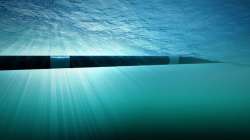India's first undersea optical fibre cable introduced in Andaman and Nicobar Islands: Know what is it
The Submarine optical fibre cable project came into being when PM Modi began the development of the 2,312-Kilometers long submarine optical fibre cable project connecting Chennai - Andaman and Nicobar Islands (CANI).

India's first-ever undersea optical fibre cable has been introduced as part of a new project inaugurated by Prime Minister Narendra Modi for Andaman and Nicobar Islands. The cable system will help provide for faster internet speeds and get rid of the cobweb of wires needed for the same. Read on to know more about the new project.
Undersea optical fibre cable
The Submarine optical fibre cable project came into being when PM Modi began the development of the 2,312-Kilometers long submarine optical fibre cable project connecting Chennai - Andaman and Nicobar Islands (CANI). This happened back in 2018.
The project, which has been implemented at a cost of Rs. 1,224 crores, will allow for high-speed broadband connectivity (400 Gbps for Port Blair and 200 Gbps for other islands), faster and better mobile and landline services, thus, helping in the improvement of the local economy. This will also help in the better functioning of e-governance, telemedicine, and even online education. The project can be used by all the telecom operators for mobile and internet services.
PM Modi, while inaugurating the project, stated, "From Chennai to Port Blair, Port Blair to Little Andaman and Port Blair to Swaraj Dweep, this service has started in large part of Andaman Nicobar from today."
Apart from Port Blair, the cable will cover other islands namely Swaraj Dweep (Havlock), Long Island, Rangat, Little Andaman, Kamorta, Car Nicobar, and Greater Nicobar.
To recall, there are many undersea optical fibre cables around the world. One such system is the Marea, which connects the US to Spain. It is owned by Facebook, Microsoft, and Telxius, a telecommunication infrastructure company owned by Telefonica group. The cable has even set a record of a transfer speed of 26.2 terabits of data per second
Latest technology reviews, news and more